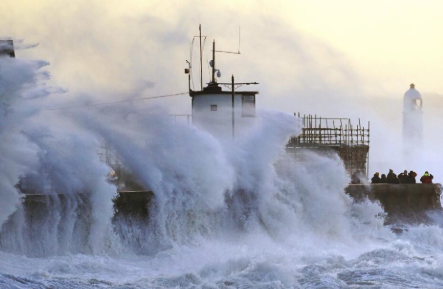Summary – Divergent storm forecasts across European broadcasters highlight challenges in regional weather prediction and its broader implications for policy and preparedness.,
Article –
Recent severe storm events affecting parts of Europe have highlighted significant discrepancies in weather forecasts from major broadcasters such as ITN and BBC. These forecasts differed by as much as 50 miles in predicted storm paths, revealing the inherent challenges of meteorological forecasting and its critical role in European society and policymaking.
Background
European weather forecasting depends on advanced numerical weather prediction models that combine atmospheric data to predict weather conditions. Different meteorological agencies and broadcasters use various models, including:
- The UK Met Office’s Unified Model
- The European Centre for Medium-Range Weather Forecasts (ECMWF) system
- Other regional and national models
These models can vary in initial data, grid resolution, and physical parameterizations, producing divergent forecasts. Recently, intense storms across the UK and neighboring regions led to differing track and intensity forecasts between broadcasters—sometimes differing by up to 50 miles—mostly due to the different assumptions about atmospheric pressure systems and wind dynamics in their underlying models.
Key Players
The main organizations involved in European weather forecasting include:
- National meteorological services such as the UK Met Office, MeteoFrance, and Deutscher Wetterdienst (German Weather Service)
- Pan-European organizations like ECMWF
- Broadcasters like BBC and ITN, who interpret and present forecasts according to their editorial policies
On the policy side, the EU’s Copernicus Emergency Management Service integrates meteorological data for disaster preparedness. Civil protection agencies in member states rely heavily on accurate forecasts for alerts and emergency responses. Additionally, researchers contribute by assessing models and advocating for improvements.
European Impact
Variations in storm forecasts have profound political, economic, and social consequences:
- Policy: Timely, accurate information is essential for emergency coordination and public advisories. Divergent forecasts can cause confusion and reduce trust in official messages.
- Economic: Sectors like transportation, energy, and agriculture depend on consistent forecasts. Discrepancies affect infrastructure protection, flight scheduling, and energy management, leading to inefficiencies and higher costs.
- Social: Conflicting information may influence public behavior negatively, impacting evacuation and preparedness decisions.
Wider Reactions
The European Union acknowledges the challenges posed by varying weather models and is promoting stronger cooperation among meteorological agencies. Key actions include:
- Expanding the Copernicus programme
- Enhancing data sharing to harmonize forecasts
- Upgrading forecasting infrastructure in member states
- Increasing integration of real-time data and improving model resolution
Civil society and expert groups urge greater transparency in communicating forecast uncertainty. They advocate for broadcasters to present probabilistic forecasts and clarify model limitations to avoid misunderstandings. The scientific community continues to advance ensemble forecasting techniques, which use multiple model runs to capture a range of possible outcomes and improve reliability.
What Comes Next?
Looking forward, Europe plans to invest substantially in meteorological research and technology, focusing on:
- Increasing computational capacity and data assimilation methods
- Enhancing coordination between national meteorological services to produce unified forecast products for policymakers and the public
- Integrating meteorological data into urban planning, infrastructure design, and climate adaptation strategies
- Improving public communication and education about forecast uncertainty
- Strengthening cross-border collaboration to address the transnational nature of storms
Ultimately, Europe faces the dual challenge of improving forecast precision while managing inherent uncertainties in weather prediction. How well it addresses these challenges will critically influence its ability to protect citizens and economies from increasing climate-related risks.
Stay tuned to Questiqa Europe for ongoing regional perspectives and insights.

More Stories
Inside Europe’s Scrutiny of Google’s Market Power: Implications for Independent News Publishers
Why the UK’s Review of Google’s Search Dominance Matters for Europe’s News Landscape
Why the UK’s Google Market Power Inquiry Matters for Europe’s News Landscape